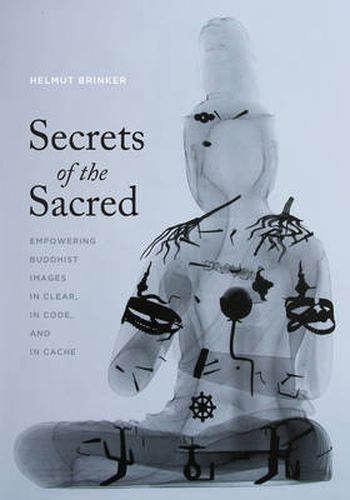Readings Newsletter
Become a Readings Member to make your shopping experience even easier.
Sign in or sign up for free!
You’re not far away from qualifying for FREE standard shipping within Australia
You’ve qualified for FREE standard shipping within Australia
The cart is loading…






Secrets of the Sacred illuminates the role of icons and relics in Buddhist writing and practice, with particular attention to the transformation of inanimate material images into potent icons animated by the divine. The earliest canonical scriptures indicate that images of the Buddha were created before the concept of transcendental identity was developed. Later writings reveal a connectedness between image and deity, and eventually art transformed into a means of creating a receptive environment for communication with the divine power and attaining wisdom. Icons became the perceivable bodies of the divine.
Esoteric practices within Buddhism trace back at least as far as the first century CE but did not develop into a religio-philosophic movement until after the fifth century. They relied on mysteries handed down from teacher to pupil. Sacred texts provided clear descriptions of the qualities and appearance of the Esoteric pantheon, but were so elaborate that they challenged the imagination and skill of Buddhist artists. Brinker traces the original meaning and function of individual icons and relics across the various schools of Buddhism. He discusses their origin, style, meaning, and individual histories. Beautiful illustrations complement the histories of these important icons and relics.
$9.00 standard shipping within Australia
FREE standard shipping within Australia for orders over $100.00
Express & International shipping calculated at checkout
Secrets of the Sacred illuminates the role of icons and relics in Buddhist writing and practice, with particular attention to the transformation of inanimate material images into potent icons animated by the divine. The earliest canonical scriptures indicate that images of the Buddha were created before the concept of transcendental identity was developed. Later writings reveal a connectedness between image and deity, and eventually art transformed into a means of creating a receptive environment for communication with the divine power and attaining wisdom. Icons became the perceivable bodies of the divine.
Esoteric practices within Buddhism trace back at least as far as the first century CE but did not develop into a religio-philosophic movement until after the fifth century. They relied on mysteries handed down from teacher to pupil. Sacred texts provided clear descriptions of the qualities and appearance of the Esoteric pantheon, but were so elaborate that they challenged the imagination and skill of Buddhist artists. Brinker traces the original meaning and function of individual icons and relics across the various schools of Buddhism. He discusses their origin, style, meaning, and individual histories. Beautiful illustrations complement the histories of these important icons and relics.